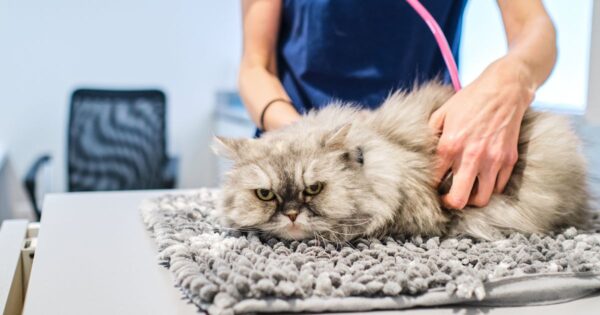
Don’t Ignore These Signs: When it’s Time to Take Your Pet to the Vet

Owning a pet comes with many joys, but it also comes with responsibilities. You’re not just providing love and a comfy bed; you’re also the first line of defence when it comes to your pet’s health. Animals can’t always tell us when something’s wrong, so it’s up to us to spot the signs. Wondering if you’re overreacting or if your pet really does need a vet visit?
Why It’s Important to Act Quickly
Waiting too long to take your pet to the vet can turn a manageable issue into a major problem. Even something that seems small, like a minor limp or a bit of lethargy, could be an indicator of something more serious brewing under the surface. Pets, like humans, can suffer from conditions that worsen quickly if left untreated.
Getting professional advice early from a reputable vet Belmont can save you stress and money in the long run. After all, emergency vet bills can skyrocket when minor problems become major crises. So, don’t wait for things to get worse—sometimes, it’s just better to be safe than sorry.
Warning Signs to Watch For
Below, we’ll cover some of the most common signs that indicate a trip to the vet might be needed. If you spot any of these, it’s better to get your pet checked out sooner rather than later.
1. Change in Appetite or Drinking Habits
If your pet suddenly stops eating or starts drinking excessively, it’s a red flag. For instance, a dog that refuses food for more than a day or two could have anything from dental issues to a digestive problem. Excessive drinking can be a sign of diabetes or kidney issues. It’s always worth checking in with the vet to rule out any serious conditions.
2. Lethargy and Low Energy
We all have our lazy days, but if your pet seems consistently tired or uninterested in activities they usually love, something could be off. Lethargy can be a symptom of infections, metabolic disorders, or even heart problems. If your once energetic dog or cat is suddenly lounging all day, a vet visit is a good idea.
3. Vomiting or Diarrhoea
Occasional vomiting or diarrhoea isn’t uncommon for pets—sometimes it’s just a reaction to something they ate. However, if it happens repeatedly, lasts for more than 24 hours, or is accompanied by blood, that’s a big sign that something is wrong. It could be an infection, food intolerance, or even a sign of poisoning. Don’t wait until dehydration sets in—head to the vet right away.
4. Unexplained Weight Loss
A sudden drop in weight can indicate several serious conditions, from cancer to thyroid problems. It’s not always easy to notice this at first, especially if you see your pet every day, so regular weigh-ins at home or during check-ups are helpful. If you do notice your pet losing weight without explanation, get them checked out as soon as possible.
5. Coughing, Wheezing, or Difficulty Breathing
Coughing and wheezing aren’t normal, especially if they’re persistent. Respiratory issues can be a sign of anything from kennel cough to heart disease. Difficulty breathing is an emergency, so if your pet is struggling to catch their breath, rush them to the vet immediately.
6. Changes in Urination
Frequent urination, straining to urinate, or not going at all can all be warning signs of urinary tract infections, kidney disease, or even bladder stones. This is especially important to watch for in cats, as a blocked urinary tract can be life-threatening if not treated quickly. Always monitor your pet’s bathroom habits and flag anything unusual with your vet.
7. Lumps, Bumps, or Growths
Finding a lump on your pet can be scary, but not all lumps are cancerous. That being said, it’s important to get any new lumps checked by a vet, especially if they’re growing quickly or seem to bother your pet. Early detection is key when it comes to treating potential tumours or other growths.
8. Sudden Behavioural Changes
Has your normally calm pet started acting out or displaying aggression? Behavioural changes can sometimes be a sign of pain or discomfort. If they’re suddenly hiding, growling, or seem distressed, a vet visit might help uncover the cause. This is particularly important if the change happens suddenly without any clear reason, like a new pet or move.
9. Eye and Ear Issues
Cloudy eyes, excessive tearing, or redness can indicate an infection or other eye problem. Similarly, if your pet is scratching their ears or shaking their head excessively, it might be a sign of an ear infection or mites. Eyes and ears are sensitive areas, so it’s always better to treat potential issues early.
10. Excessive Scratching or Hair Loss
While occasional scratching is normal, excessive scratching or sudden bald patches aren’t. Skin problems can stem from allergies, infections, or parasites, so it’s important to get to the bottom of it quickly. Left untreated, these issues can lead to bigger problems, like infections from constant scratching.
When in Doubt, Trust Your Gut
At the end of the day, you know your pet better than anyone. If something doesn’t feel right, it’s always best to get a professional opinion. Veterinarians are there to help and would rather see your pet for a minor concern than have you wait until it’s too late.
Many clinics even offer telehealth consultations now, so you can get advice without leaving your home if you’re unsure. But remember, certain symptoms should never be ignored, and if you’re ever in doubt, it’s always better to be cautious.
Final Thoughts
Our pets rely on us to keep them happy and healthy. While it’s easy to brush off small symptoms, it’s always worth getting a professional opinion if something seems off. Early intervention can make a world of difference in their health and quality of life.











































